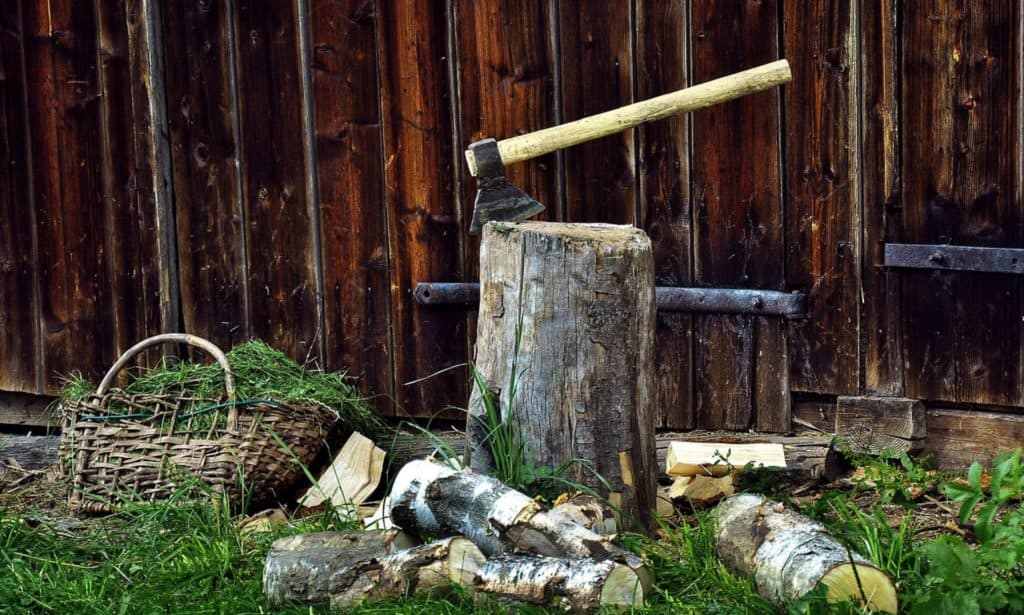
-
Save
Share this article: Bugoutbill.com is independent – we research, test, and rate the top products to help you make the right buying choice. We sometimes use affiliate links and may receive a small commission on your purchase. Learn more…
Overview
A decent quality axe can last a lifetime or even longer if properly cared for. Sharpening your axe is one way to keep it in good shape.
Be sure to keep these things in mind:
One of the most crucial tools you’ll ever have is your axe. It’s required for creating a shelter and chopping wood for your fire, and it will undoubtedly be one of your most useful survival tools.
It’s a vital piece of kit!
Axes and knives are both sharpened in the same way.
However, the method is unique, and you need to master it to complete the job properly.
Table Of Contents
Table of Contents
When sharpening knives, you place the blade on top of the sharpening equipment; but with an axe, you move the sharpening tools of the axe head’s sharp edge.
A few words of caution:
Sharp axes are very dangerous.
But blunt ones are worse.
You’ll notice you’re using greater force and making uncontrolled movements, and we don’t have to go into detail about what that means.
You won’t struggle if you use a razor-sharp axe since you’ll be able to chop with technique. It’s a lot less tiring and safer!
I shared what I had learned about How to Sharpen an Axe after years of practicing these techniques. What we’ll be looking at in this article are:
- Why you should sharpen your axe and how important it is to do so;
- When should you sharpen your axe?
- Using various simple tools such as a file, grinder, and sharpening stone to sharpen an axe;
- How much it costs to sharpen an axe;
- And a lot more!
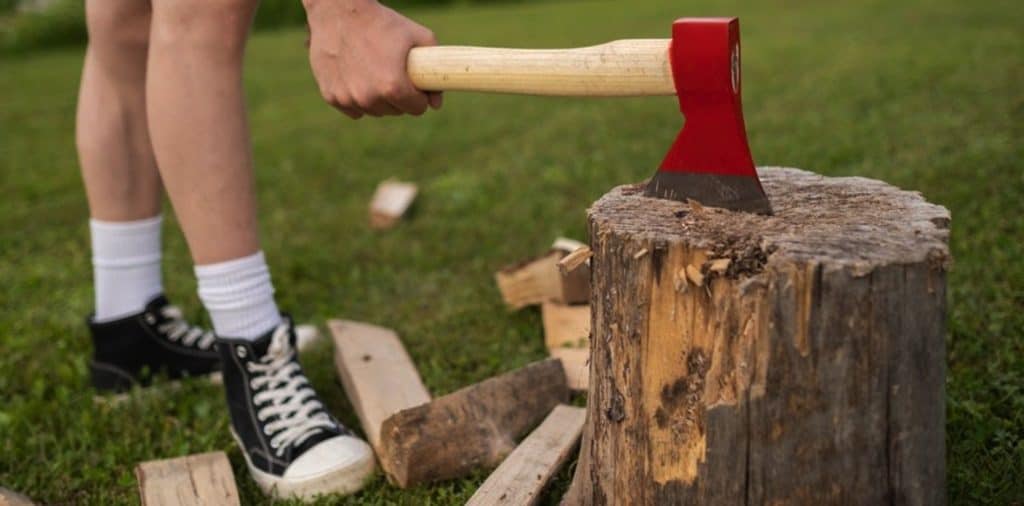
-
Save
This is most likely what you’re looking for right now…
“How do I know how to sharpen an axe?”
Indeed, you don’t have to go out and spend thousands of dollars on sophisticated equipment to get the job done.
And, let’s be honest…
Over time, even the greatest steel will get dull. An axe’s edge will need to be sharpened over time, so knowing some simple sharpening techniques will help you keep your instrument in good working order.
Just like everything else…
Sharpening an axe can be done in a variety of ways. Take this for what it’s good enough to justify, and I hope it helps you now and in the future.
First and foremost…
You should evaluate the state of your existing tool. You might only need a touch-up or polishing to get it to blade sharp if you’ve taken good care of it.
Apart from that…
One of the most essential tools you have is your axe.
It’s required for creating a shelter and chopping wood for your fire. It is unquestionably one of the best survivalist tools you will bring with you.
A blunt ax can be a real hassle when it comes to doing what you want to do outdoors.
If you’ve ever used an axe, you know how frustrating it is to try to chop wood with a blunt axe.
It just does not work.
If this is the scenario…
It’s not much more than a large hammer. A blunt axe will never be your friend in the outdoors; therefore, make sure your axe head is sharp at all times.
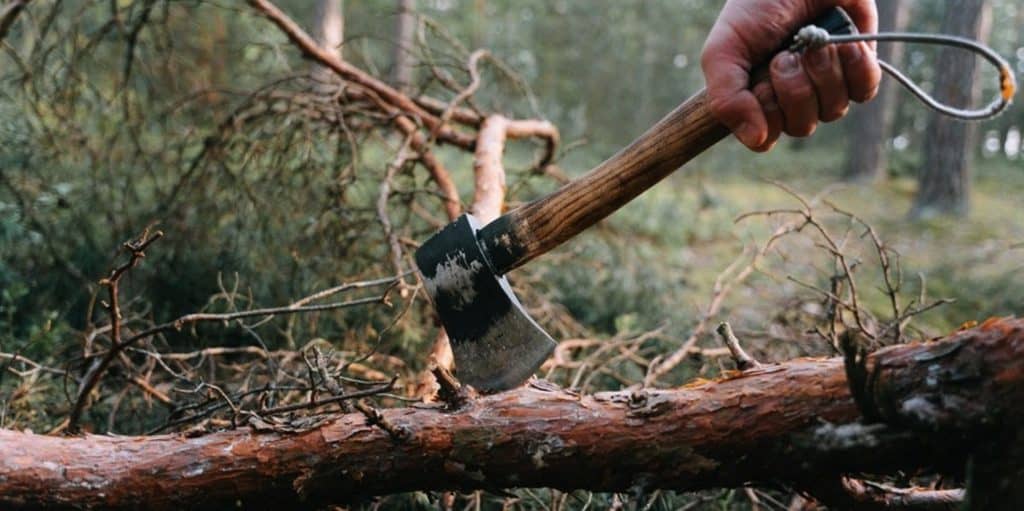
-
Save
We’ve all overheard someone say…
“A dull axe or knife poses a greater risk than a sharp one.”
Absolutely true!
Most people don’t realize that it can still cut you even if it can’t cut rope or other materials.
How?
The hazard is that cutting wood with a blunt knife needs much more pressure than cutting wood with a sharp knife, making it more probable that the blunt knife would slip and gash your hand or leg.
Well…
This is also true with a blunt axe.
We already understand that using an axe necessitates a lot of care, and adding even more to the equation by employing a blunt axe head isn’t going to help.
Hence…
Try to avoid working with a blunt axe for safety reasons.
Recent posts
Categories
When To Sharpen An Axe

-
Save
You might want to question as to:
“How can I tell when my axe needs to be sharpened?”.
The truth is that if your axe head isn’t sharp enough, you can usually tell when it’s time to replace it.
However…
If you’re not sure, tell yourself that a sharp axe blade should be able to cut paper with minimum effort. Sharpen your axe before any wood-chopping session or at the start of the fall or winter season.
But sharpening axes should not be a once-a-year event.
When chopping wood, make sure to check the sharpness of the axe by running your finger over the edge of the axe regularly.
Here’s my take:
If I’m going on a camping trip, I’ll need to sharpen axes more frequently, maybe every 4-5 days, to ensure that it’s always sharp. Basically, I’d suggest starting sharpening your axe as soon as you detect it’s not working as well as it should.
You’ll get the feel for it if you’re vigilant.
Related: How To Build An Underground Bunker
How To Sharpen An Axe With A File
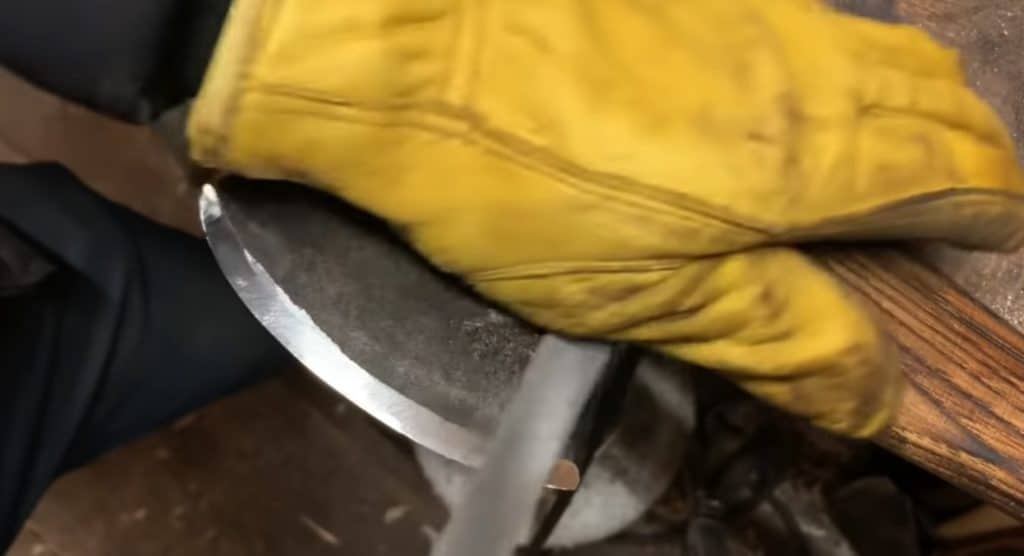
-
Save
Once you’ve mastered the art of sharpening an axe, it’s a fairly straightforward task for you. It is possible to complete this operation in various ways, but I prefer to do so by using a file.
However, not everyone has a bench grinder or a Rollock tool. The cost of a file is low, and it is simple to use.
Furthermore…
A file is one of the most frequent tools for sharpening an axe to a usable edge. The results are excellent because it’s a straightforward approach, especially for axes from hardware stores.
Just don’t forget…
Wear a pair of work gloves and, stroke by stroke, proceed to work your way up and down the axe’s edge with the file. To avoid reshaping the grind, match the bevel of the blade.
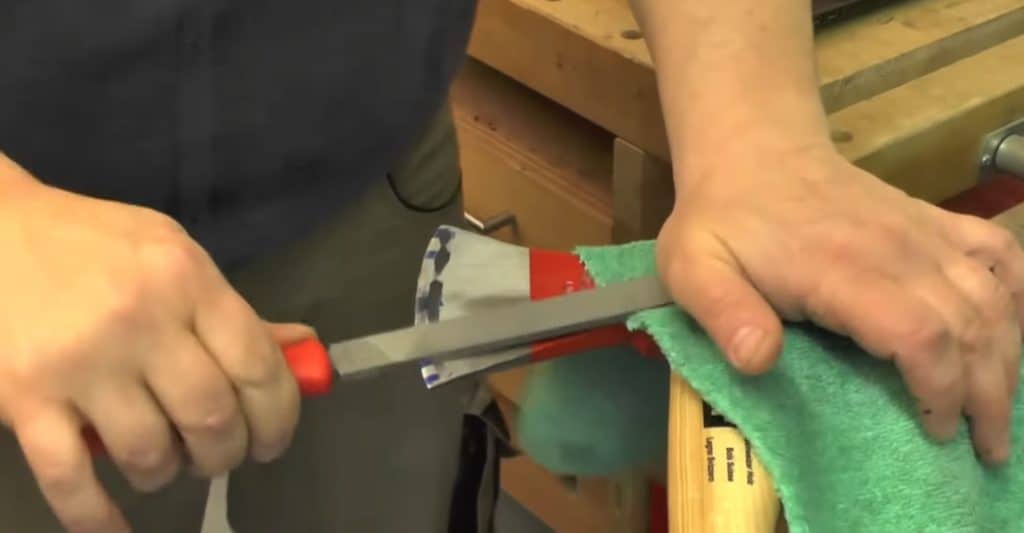
-
Save
Sharpen An Axe With A Grinder
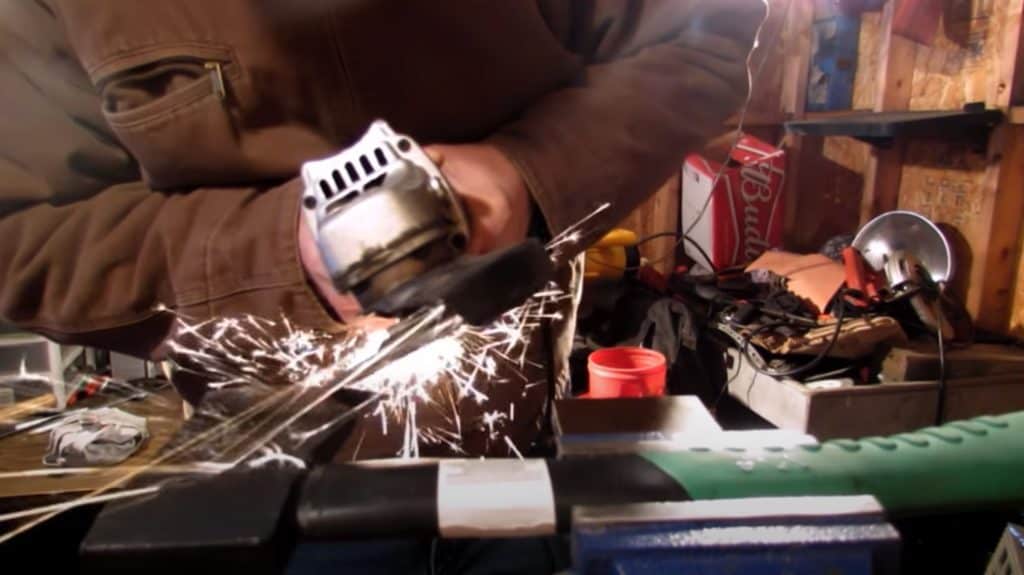
-
Save
A grinder is a machine that can be used to cut, polish, and grind surfaces, materials, and other equipment. Handheld or angle grinders, as well as industrial machine grinders, are two types of grinders. The angle grinder is the most frequent and popular tool for axe sharpening.
In addition to that…
The most common form of grinder tool is an abrasive wheel or disc that revolves with the assistance of an electric motor, a gasoline engine, or even compressed air.
With this…
Learn how to use a grinder to keep axes and knives razor-sharp if you want to keep them that way.
A bench grinder will do a rapid, less exact technique of sharpening an axe. Just make sure that you wear gloves and safety glasses, and keep your hair short and loose, so it doesn’t get caught in the machine.
Remember!
Always look for the correct angle before continuing.
Tip the blade upward until the inclination of the axe edge on the bottom of the blade is about parallel to the grinding wheel while holding the axe against the rest.
And then…
Sweep the edge of the axe bit across the grinding wheel in a straight line with the axe bit’s curve in mind. To avoid flat patches in the grind and overheat the bit, keep the axe bit moving around the wheel.
Finally…
To keep the centered edge, continue polishing one axe edge and then the other, testing for sharpness between each pair of grinding sessions. A rougher finish is created by grinding an axe, but it should be devoid of nicks and dents.
Protect the axe head with a dab of oil or wax when you’ve finished.
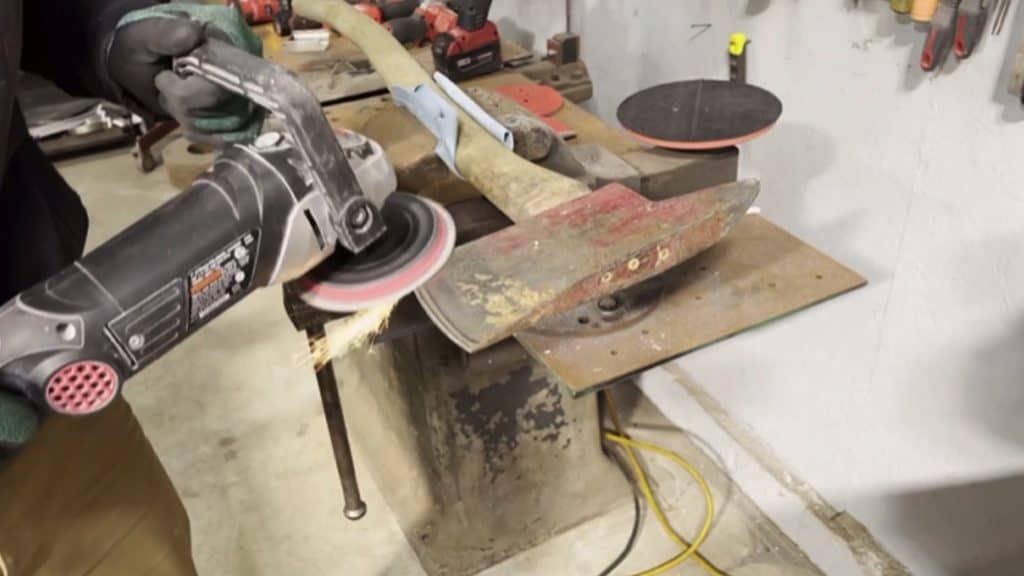
-
Save
Related: How To Survive In The Woods
Sharpen An Axe With A Sharpening Stone
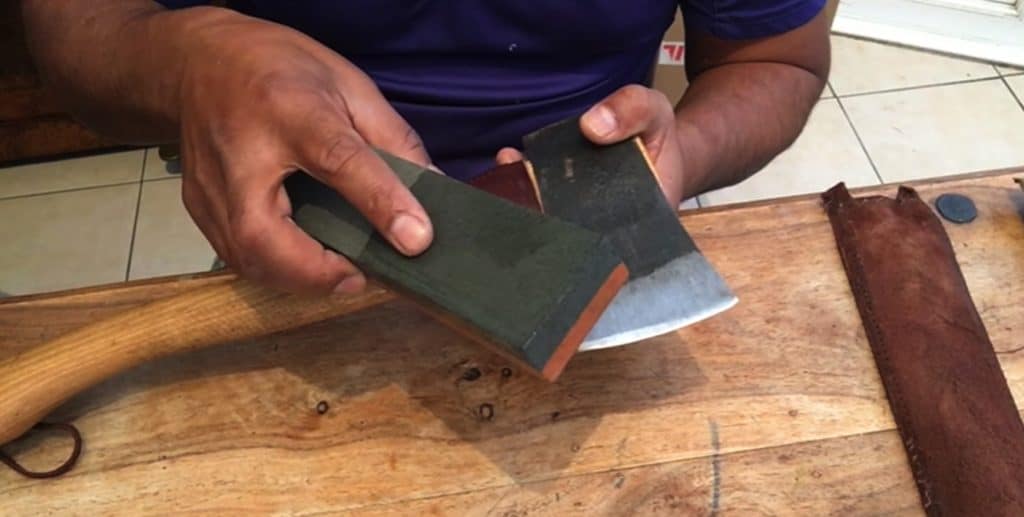
-
Save
The basic and classic Whetstone or sharpening stone is the simplest and most reliable approach to correctly and consistently sharpen an instrument. Power tools can give you a great edge and speed, but they can quickly ruin your ax if you don’t use them correctly.
Apart from that…
Using sharpening stone is the most-old school of axe grinding method.
When you’re out in the field, you can also sharpen your sharpening stone. Belt sanders aren’t very portable. So when camping, one or two sharpening stones can be easily tucked away in your rucksack.
So, here’s how you go about it:
Hold your axe with the haft over your left shoulder with the cutting edge pointing aloft. You’ll be honing the axe’s left side when you’re in this posture.
And then…
The cutting bevel gauge should be moistened to a limited extent. When you notice a dry scraping sound, make sure to reapply as soon as possible. You’ll need a lot less oil to lubricate your stone if it’s meant to use it.
Here’s a useful reminder!
Oil should never be used on water stones.
Stop and look for a burr of metal, also known as “wire edge,” on the other side of the axe now and then. It’s time to turn the axe around if you’ve raised a burr along the entire cutting edge. It will have a rough texture, similar to sandpaper. Rub the tip of a coarse stone along the extreme edge with honing oil or sewing machine oil in a circular motion.
Concentrate your efforts on the part of the axe that still needs a burr to be raised if the burr is only brought up on a portion of the axe.
Remember:
The burr will build on the right side of the axe if you work on the left side and vice versa if you work on the left side.
Then, finally…
You can arc the stone around the edge of a curved axe with your wrist. This procedure should be repeated until the burr has mostly been eliminated.
You’ll be able to sharpen both axes and knives with this procedure, so if you ever need to touch up a knife blade, you’ll be able to do so with ease.
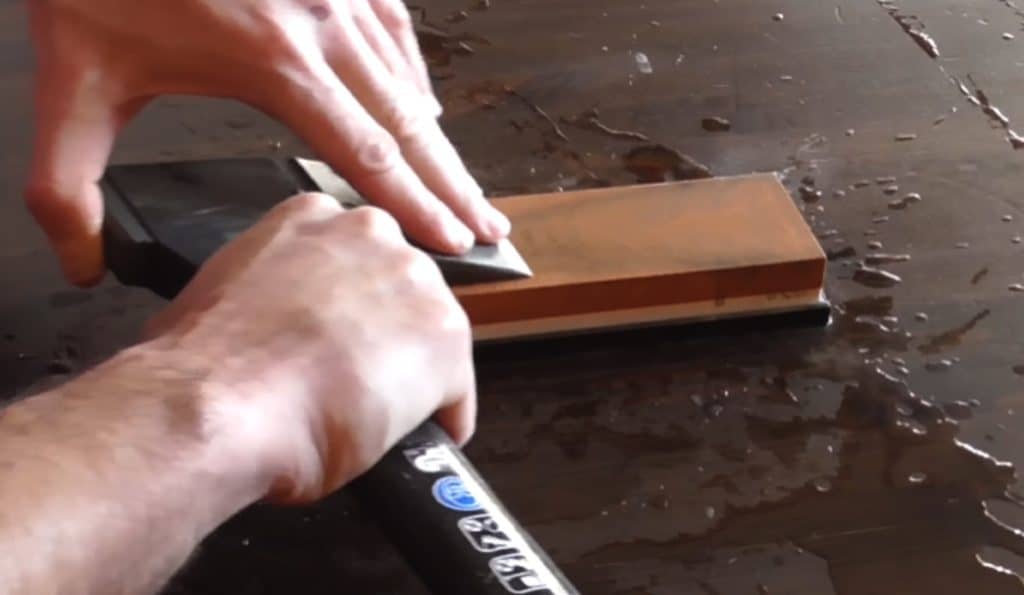
-
Save
Related: Survival Gear
How Much Does It Cost To Sharpen An Axe?
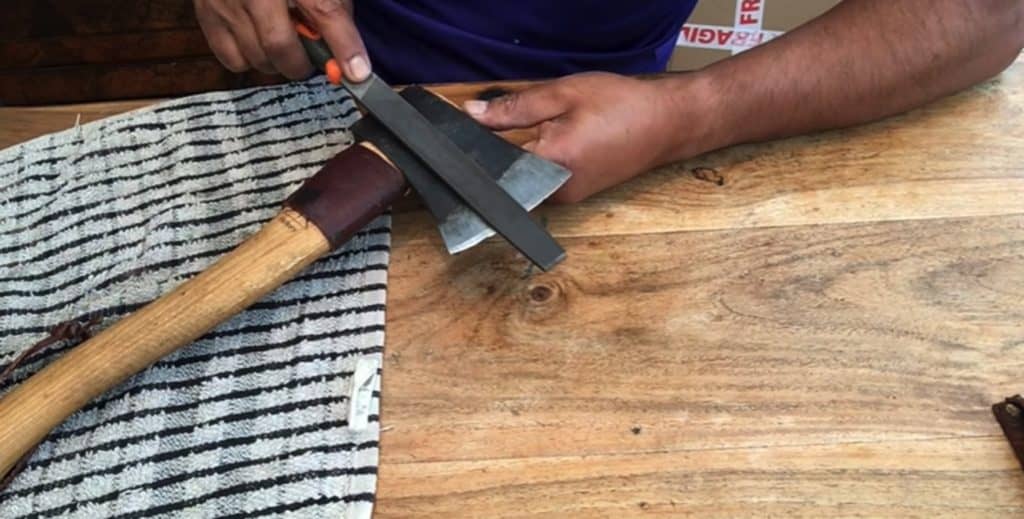
-
Save
You should be able to sharpen an axe without difficulty if you follow this guide. There are, however, times when a person would rather not sharpen their axe, and there is, thankfully, a way out.
You can pay someone to sharpen an axe for you if you have an heirloom axe or don’t want to bother with sharpening your own. The majority of professional services will charge a fee of between $5 and $10 per hour. The cost will be higher in other cases, such as those requiring rare metals or extremely broken parts.
Most sharpening shops will rehandle an axe for $20 plus the cost of the handle if it needs to be replaced.
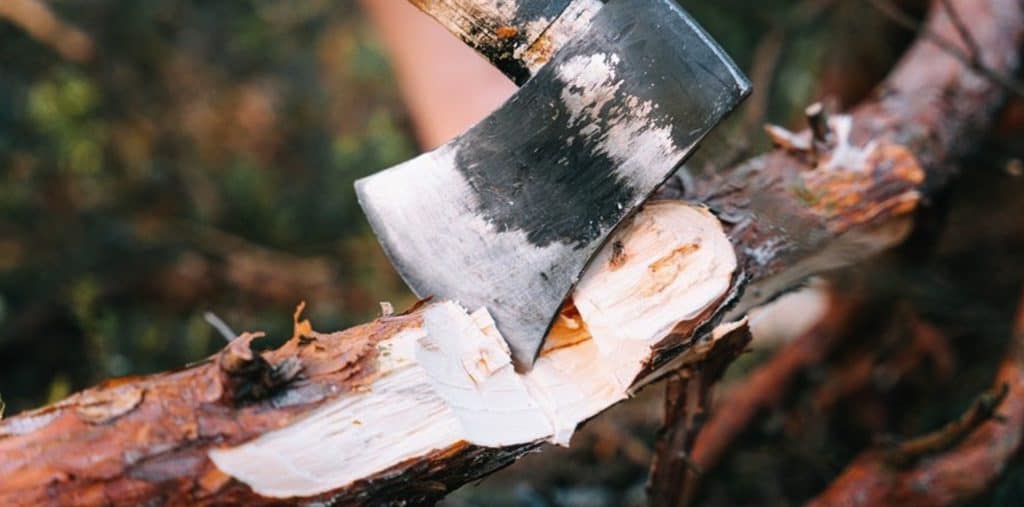
-
Save
For me, it’s this:
A grizzled old-timer would sharpen my axe with a fondness for swearing and a great loathing of computers if I were giving it off to someone else! Nothing beats a good old bastard mill file and wire brush to obtain a razor-sharp edge on your axe.
Related: Survival Gear
Conclusion: How To Sharpen An Axe
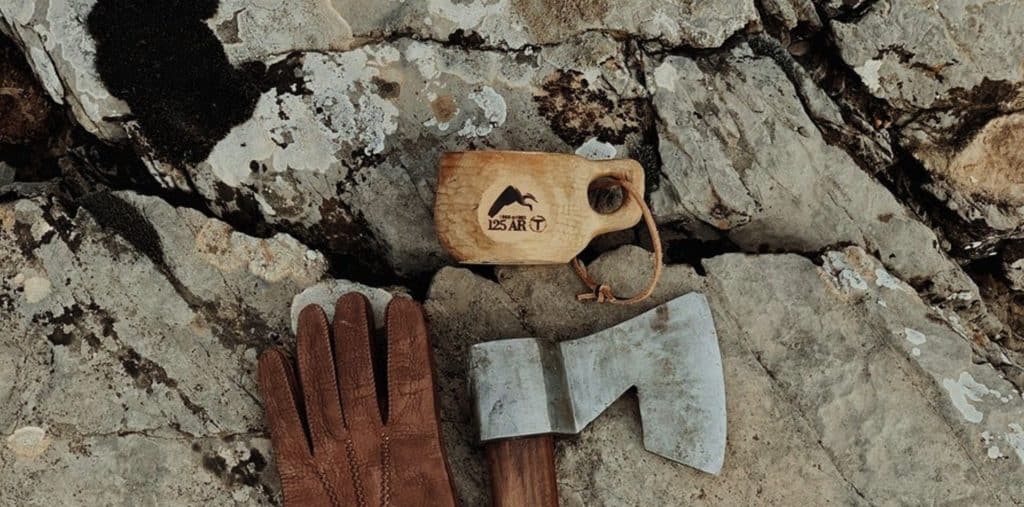
-
Save
I’ve seen a lot of axes used and abused over the years, and it takes a long time to bring these axes back to life correctly. Axes should be treated with care and well maintained, even through years of use.
Be sure to keep these things in mind:
If you take care of your axe, it will take care of you.
One more point!
When you’re not using your axe, keep it in its sheath. It should not be left on the ground, in a tree stump, or on the ground, and this will cause the axe head to corrode and your blade to dull. You should always keep your axe in a well-ventilated area and store it in a safe place.
That’s all there is to it!
The information I offer will hopefully help you get what you need and teach you some new strategies and tips.
To sum up…
There is nothing wrong with any of the strategies suggested in this article, and it all depends on what you have on hand at the moment.
Similiar Posts
Community Cuisine: MREs and Grassroots Food Movement Engagement
Interested in the connection between community cuisine, MREs, and the grassroots food movement? This article
The Future of Food: MREs and Their Contribution to Systemic Change
Meal, Ready-to-Eat (MRE) is a convenient and portable food option that has been gaining popularity
On the Frontlines of Food Change: MREs in Food System Transformation
In a context where food system transformation is a prominent topic of discussion concerning sustainability

-
Save
About Author
Bug Out Bill is an adventurer and survivor through and through. From the time he was just a little boy (Bug Out Willie) running and jumping through the backwoods of the rocky mountains in Colorado, to the man he is today. Backpacking through South America, scaling two 26,000+ ft peaks, sailing across the Mediterranean, surviving a near death 50 foot fall with very little food while waiting 6 days to be rescued in the wilderness, and everything in between. No wonder he wants to Bug Out, hahaha. BO Bill is truly a passionate outdoorsman when it comes to living life to the fullest with no boundaries. The way we were meant to live and survive. He shares that passion here with you in his writing and sharing. We hope you enjoy your stay at the Bug Out Bill website. . Now Bug Out!
Bugout Bill -
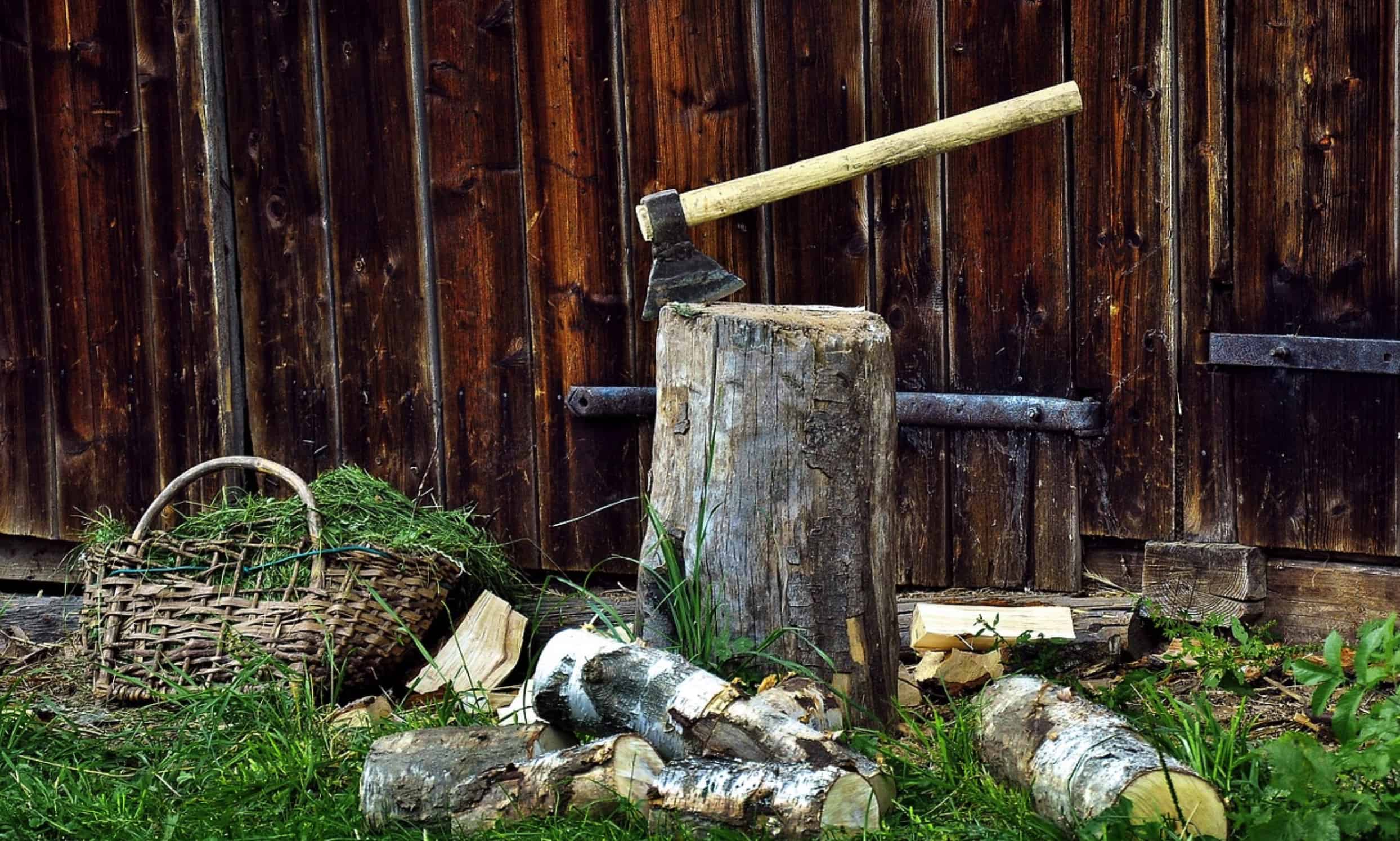
-
Save

